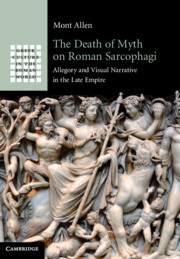Book contents
- The Death of Myth on Roman Sarcophagi
- Greek Culture in the Roman World
- The Death of Myth on Roman Sarcophagi
- Copyright page
- Contents
- Figures
- Acknowledgments
- Note on the Text
- Introduction
- One Myth a Casualty of Christianity
- Two Bucolic Sarcophagi and Elite Retreat
- Three Refuge from the Third-Century Crisis
- Four Culture, Status, and Rising Populism
- Five Myth Abstracted
- Six Distinguishing the Mythological
- Seven Conclusion
- Eight Coda
- Works Cited
- Index of Objects by City/Museum
- General Index
- References
Works Cited
Published online by Cambridge University Press: 13 January 2023
- The Death of Myth on Roman Sarcophagi
- Greek Culture in the Roman World
- The Death of Myth on Roman Sarcophagi
- Copyright page
- Contents
- Figures
- Acknowledgments
- Note on the Text
- Introduction
- One Myth a Casualty of Christianity
- Two Bucolic Sarcophagi and Elite Retreat
- Three Refuge from the Third-Century Crisis
- Four Culture, Status, and Rising Populism
- Five Myth Abstracted
- Six Distinguishing the Mythological
- Seven Conclusion
- Eight Coda
- Works Cited
- Index of Objects by City/Museum
- General Index
- References
Summary

- Type
- Chapter
- Information
- The Death of Myth on Roman SarcophagiAllegory and Visual Narrative in the Late Empire, pp. 243 - 260Publisher: Cambridge University PressPrint publication year: 2022



